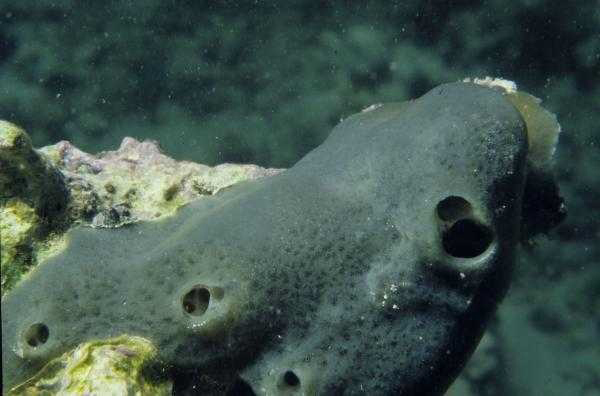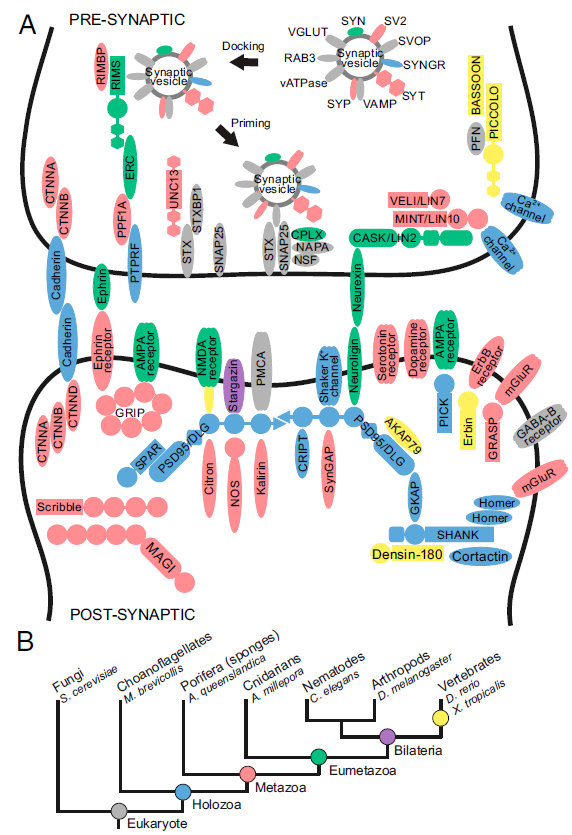Why the sponge’s protosynapses never evolved into the real thing
June 25, 2012 by Amara D. Angelica

Almost a mind: the genes of Amphimedon queenslandica, a marine sponge native to the Great Barrier Reef, Australia, have now been fully sequenced, allowing researchers to monitor gene expression for any signs of neural development (credit: UCSB)
It was a mystery: sponges had evolved a protosynapse — the beginning of a nervous system — but never actually developed a real synapse.
It was the evolutionary period of time when virtually the rest of the entire animal kingdom branched off from a common ancestor it shared with sponges, the oldest known animal group with living representatives.
Ironically, sponges themselves have no nervous system. So what happened to spur the evolution of the nervous system — a characteristic shared by creatures as simple as jellyfish and hydra to complex humans?
To find out, Kenneth Kosik, Harriman Professor of Neuroscience Research in the Department of Molecular, Cellular & Developmental Biology, and co-director of the UC Santa Barbara Neuroscience Research Institute and his colleagues sequenced the genome of the Amphimedon queenslandica — a sponge that lives in Australia’s Great Barrier Reef.
They found that the genome contained the same genes that lead to the formation of synapses, the highly specialized characteristic component of the nervous system that sends chemical and electrical signals between cells.

Origins of synaptic genes. (A) Homologues of genes in the human synaptic complex were identified in the genomes of selected organisms representing key phylogenetic steps in animal evolution. Colors indicate the inferred ancestor of origin for each gene, as indicated in B. (B) Evolutionary relationships among animal phyla. The names of representative species are shown. (Credit: C. Conaco et al./PNAS)
Next, they examined the sponge’s RNA (ribonucleic acid), a macromolecule that controls gene expression.
A failure of global coregulation
They followed the activity of the genes that encode for the proteins in a synapse throughout the different stages of the sponge’s development. (Assembly of a functioning neuronal synapse requires the precisely coordinated synthesis of many proteins.)
“We found a lot of them turning on and off, as if they were doing something,” said Kosik. However, compared to the same genes in other animals, which are expressed in unison (suggesting a coordinated effort to make a synapse), the ones in sponges were not coordinated.
In the sponge, a nearly complete set of synaptic genes exists, but sadly, no actual synapses. The reason: these “protosynaptic” genes displayed a lack of global coregulation. A vivid example of the role of cooperation — between genes in this case — in evolution.
“It was as if the synapse gene network was not wired together yet,” said Kosik. The critical step in the evolution of the nervous system as we know it, he said, was not the invention of a gene that created the synapse, but the regulation of preexisting genes that were somehow coordinated to express simultaneously, a mechanism that took hold however in the rest of the animal kingdom.
Plans for future research include a deeper look at some of the steps that lead to the formation of the synapse; and a study of the changes in nervous systems after they began to evolve.
Is there a metaphor here? What proto form of intelligence has been developed in us, homo sapiens, that we may not be aware of, and itself may never develop into a functioning form, but see fruition in whatever replaces us?